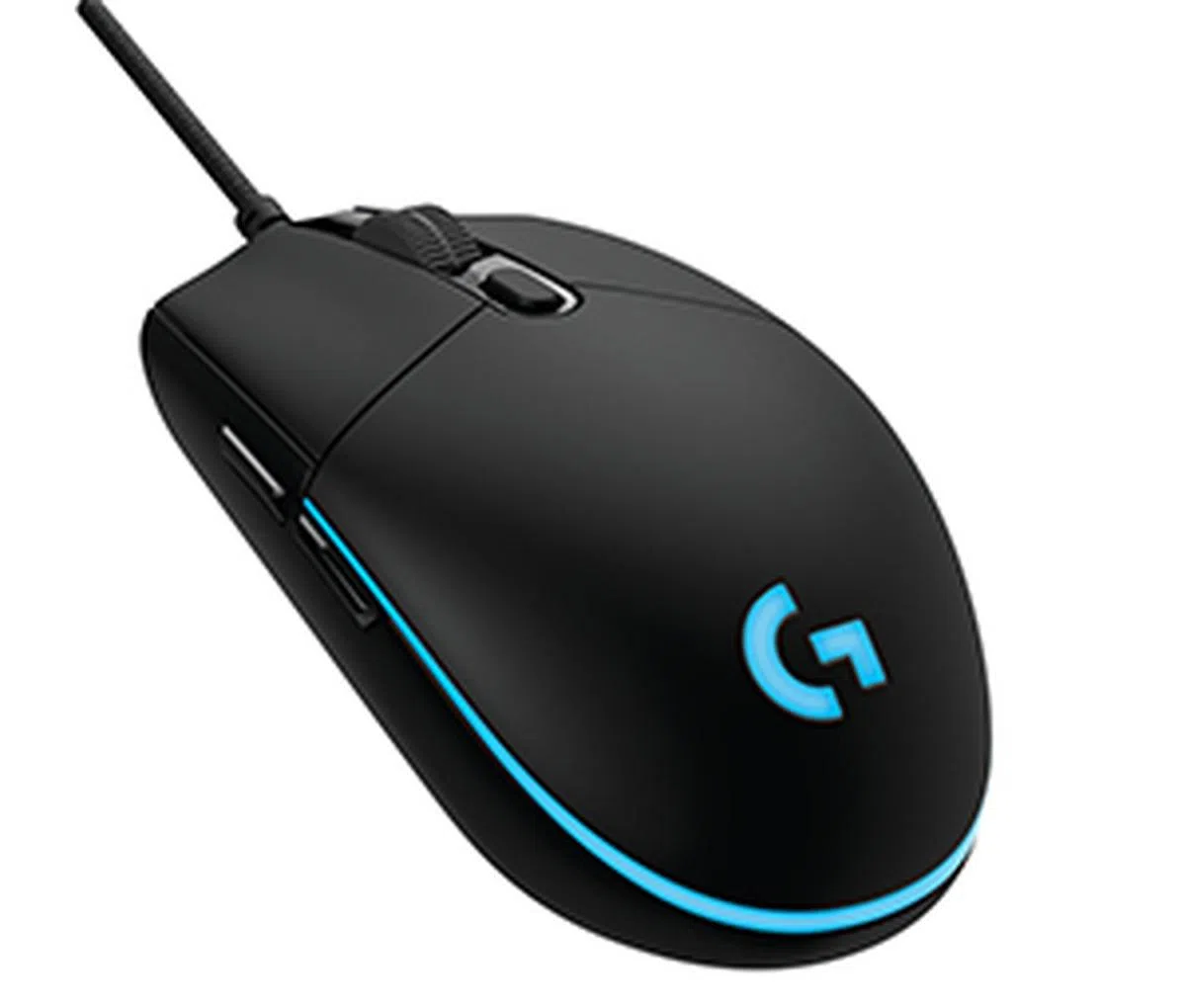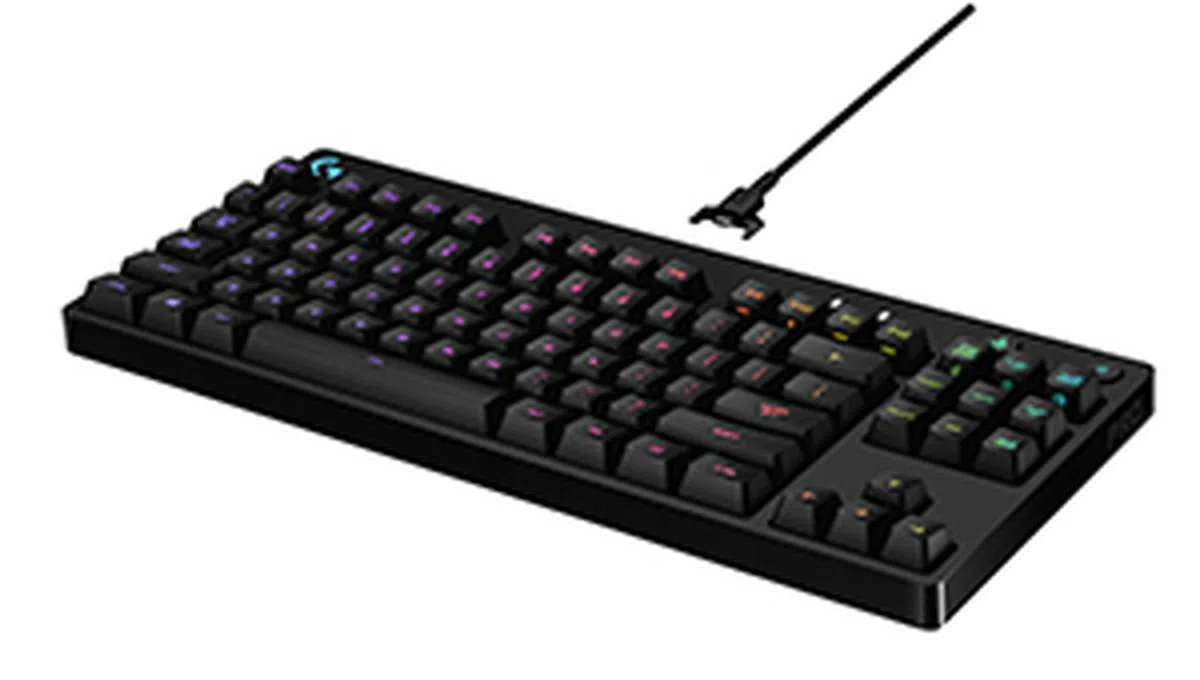Logitech G Pro Gaming Mouse and Mechanical Gaming Keyboard review: Tournament-friendly gear
The Logitech G Pro Gaming Mouse and Mechanical Gaming Keyboard were designed with the pros in mind. But how do they really hold up in real life?
How to win over a gamer
E-sports is taking off in a big way in recent years. From live tournament broadcasts on Twitch to the hype generated around massive US$20 million prize pools, competitive gaming has played a big role in driving interest among more casual players.
And as e-sports continues to gain legitimacy as a professional endeavor, that only means that more and more hopefuls will aspire toward a career as a competitive gamer.
Gaming brands have responded to this by creating products designed for the “pros”, and that’s actually a really good thing, even for the casual gamer.
These peripherals often eschew more garish designs in favor of something more tasteful, and they’ve smartly cut down on superfluous features that just add to the cost of products without burnishing the user experience in any meaningful way.
In other words, you get cheaper and better-looking stuff. What’s not to like?
Logitech’s G Pro series is a shining example of this approach, and the G Pro Gaming Mouse and Mechanical Gaming Keyboard don’t waste any of your time with fancy features or futuristic designs.
Put simply, they just work, and the good news is that they’re pretty good at what they do.
Logitech G Pro Gaming Mouse

The Logitech G Pro Gaming Mouse combines a simple and elegant design with a flawless sensor.
The Logitech G Pro Gaming Mouse can feel like a dream come true for those looking for a mouse that offers only what you can actually use. It combines the best elements of Logitech’s previous mice – the shape of the G100S and the sensor of the G303 Daedalus Apex – into a mouse targeted at professional FPS gamers.
Of course, that’s an awfully specific target audience, and gamers looking for more outlandish lighting effects, a shape more molded to fit your hand, or more buttons will be better satisfied looking elsewhere.
The G Pro is a fairly low slung and compact mouse. It measures just 116.6mm long and 38.2mm high, so that’s something to take note of if you prefer mice with high arches. Having said that, the G Pro takes quite well to both palm and claw grips, and its matte surfaces resist grime quite well even after long hours of gaming.

This is quite a flat mouse, and it's missing the high arch on mice like Zowie's ZA series.
But while it has an ambidextrous shape, the placing of the side buttons only on the left makes this technically a right-handed mouse. Still, south paws will be able to use it provided they are willing to forego easy access to the side buttons, as the Logitech Gaming Software lets you flip the functions of the left- and right-click buttons.

The mouse has an ambidextrous shape, but the side buttons were intended for right-handed use only.
The optical 12,000DPI PMW3366 sensor (this is Logitech’s version of the PixArt PMW3360 sensor) is widely regarded as the best on the market right now, and tracking was flawless across a wide range of scenarios. There was no noticeable acceleration or jitter, regardless of whether we were making quick flicks or tracking moving targets.
Lift-off distance was also low, so low-sensitivity gamers should have little trouble when repositioning the mouse.

The mouse feet look a little small, but there were no issues with glide at all.
More importantly, the mouse is light, weighing only 83g (without cable), a very important factor for FPS gamers. A heavy mouse can interfere with quick movements and cause fatigue over long hours, so a lightweight body is essential.
A dedicated DPI button sits below the scroll wheel, allowing you to toggle between different DPI steps on-the-fly. The mouse supports up to five DPI steps, which can be stored on the onboard memory and accessed on a different PC.
You can choose between 200 and 12,000DPI in 50DPI steps, which allows for fairly fine-grained adjustments.
The scroll wheel itself is a rubberized affair with distinct ridges, and there’s a nice resistance to each notch so you won’t find yourself overshooting your target if you use it to scroll through your weapon inventory. There’s no side-scrolling function as on mice like the G502 Proteus Core, but you’ll probably not miss it if you’re going to use this mouse primarily for gaming.

The single DPI button can be remapped to a different function if you so wish.
Finally, the two side buttons sit right below your thumb, but some of you may find them a tad bit narrow.
It isn’t often that a gaming mouse seems well-suited to someone with smaller hands – the side buttons are often located too far forward for instance – but the G Pro fills this role admirably. That said, that doesn’t mean that the mouse is bad if you’re a large person, but you may probably find a claw or fingertip grip more comfortable.
The left- and right-click buttons produce satisfying feedback as well, and in no way did they feel too sensitive or mushy.

There is a nice, satisfying click to each button press.
The LED lighting is subtle, taking the form of a continuous light rail running around the bottom half of the mouse. This is quite tasteful, and along with the illuminated Logitech logo on the mouse’s back, can be customized with the Logitech Gaming Software.
The variety of lighting effects available isn’t the greatest, with just options for static, breathing, or color cycle effects, but it helps add some character without going overboard.

The G Pro gaming mouse offers only a slimmed down menu of lighting options.
Could the G Pro mouse be improved? Of course. The single DPI toggle button makes switching through the full five DPI steps a bit tedious, and there’s no way to tell which step you’re currently on. Two buttons would have been nice, or at least a feature to save individual lighting effects to individual steps as a way of telling them apart.
It would also have been nice to have some sort of rubberized side grips, as on the Razer Deathadder Elite.
But here’s the thing. Pro gamers probably won’t find themselves switching through different DPI steps that often – they find their preferred sensitivity and stick to it. Furthermore, there’s nothing wrong with the matte coating on the G Pro, and it resists sweat quite well.
Logitech dispensed with these luxuries in favor of a more streamlined design, and it looks to have worked out pretty well. The G Pro costs S$109, so it’s not exactly super affordable, but it is a very reasonable price for the performance and comfort it offers.
Logitech G Pro Mechanical Gaming Keyboard

The G Pro's tenkeyless design makes it easy to transport to offline gaming sessions.
If you’ve grown weary of large, over-sized gaming keyboards with ostentatious designs, the Logitech G Pro Mechanical Gaming Keyboard can feel like a breath of fresh air. Similar to the G Pro Gaming Mouse, superfluous bits have been thrown out, and if a certain feature doesn’t serve a crucial purpose, Logitech hasn’t included it.
The result is a fairly minimalist keyboard that is blissfully free of garish branding or other protruding bits of plastic. It follows a tenkeyless design, and its smaller footprint means you’ll have a larger mousing area – good for low-sensitivity gamers – and makes it easier to center. Ultimately, you should find that it is a lot more comfortable to use than a full-sized design.
It uses Logitech’s own Romer-G switches, the result of a partnership between Logitech and Japanese switch maker Omron.

Note the central light guide that helps illuminate the key legends more evenly. (Image Source: Telcontar)
The rationale behind many gaming keyboard manufacturers’ decisions to opt for their own switches is that the more common Cherry MX switches were never designed with gaming in mind (there are newer Cherry MX Speed switches with shorter actuation distances, but these are still quite uncommon), hence the need for new switches that will supposedly serve gamers better.
Romer-G switches have an actuation distance of 1.5mm (total key travel distance of 3mm), compared to the 2mm on Cherry MX switches. This allows for quicker execution of key presses in theory, but there isn’t much of a tangible difference in our experience.
Another distinctive feature of the Romer-G switches is their use of a light guide that illuminates the keycap legends right from the center. This is in comparison to LEDs mounted on the switch housing, which can lead to uneven illumination, especially on keys with double legends.
On paper, these are fairly light switches, with an actuation force of 45g. They are best compared to Cherry MX Browns, but with a lighter (actually barely perceptible) tactile bump at the beginning of every keystroke.
We say that they are light switches on paper, mainly because they are surprisingly fatiguing to type on after long hours. This isn’t something you notice in game where you’re furiously button mashing, but the G Pro keyboard isn’t the best for work.
Two buttons sit at the top right – one is a dedicated Game Mode button that disables the Windows key, and the other simply toggles the keyboard backlight on or off. These are convenient for when you want to launch a game and quickly shut out any distractions, and they’re definitely nice to have.

There are dedicated buttons at the top right for toggling Game Mode and the keyboard backlight.
And even though we said that the G Pro focused mainly on the essentials, it does still come with customizable per-key RGB backlighting and the Logitech Gaming Software adds a ton of functionality. This includes a programmable function row, custom game profiles for a wide range of titles, and the ability to assign complex commands to specific in-game controls.
If individual customizations sound like too much work, Logitech has helpfully divided the keyboard into lighting zones comprising things like the Function Keys, Numbers, Arrow Keys, and Modifiers. This lets you quickly select entire groups of keys and assign specific effects to them, so you get your own custom effect with less hassle.
The keyboard itself is built mainly out of plastic, but it feels robust and well put together. The detachable, braided cable also speaks of quality, and goes a long way toward making transportation easier.
However, one gripe we had is the ABS keys, which pick up grease easily and thus become shiny quickly. This wouldn’t be a problem if the keyboard supported third-party keycaps, but the proprietary Romer-G switches means that you’re stuck with Logitech’s own keycaps for as long as you own the board.

Even with the largest feet flipped out, it still felt like the keyboard could do with a little more height.
We’d also liked to have the keyboard feet support a steeper angle of inclination. As it turns out, there are two different sets of feet for a 4- and 8-degree elevation, but even the latter felt too flat for our liking. Of course, you may very well feel differently, and the two set of feet help cater to different preferences.

The keyboard has two sets of feet for different height elevations.

Here's a look at the smaller set of feet.
At S$199, the Logitech keyboard is a slightly tougher sell than its rodent sibling. Ultimately, you're probably paying for its pro gaming focus, per-key lighting customizations, and features of convenience like the dedicated Game Mode button and detachable cable.
Trimming the fat

Logitech's G Pro line eschews superfluous features and focuses on what you'll actually need.
Logitech has done a commendable job with the G Pro Gaming Mouse and Mechanical Gaming Keyboard. The two are hardly perfect, but we like this practical approach of prioritizing functionality over the most eye-catching design.
All things considered, the G Pro Gaming Mouse is a very well-designed mouse that delivers on most fronts. If you’re looking for a reliable mouse that doesn’t break the bank, this has our recommendation, especially if you have smaller mitts and are an FPS gamer.
Similarly, the G Pro Mechanical Gaming Keyboard is great at what it does, that is, gaming. It isn't a class act like a Filco, nor will it appeal to mechanical keyboard enthusiasts who like themselves a good Topre board and custom keycaps. And if we're being honest, the Romer-G switches don't do much to endear themselves to the avid typist. Nevertheless, if you're a gamer, the keyboard will serve you well. Above all, it looks to be an attractive option for those who favor simplicity and function in their gaming peripherals. If what you want is a keyboard mainly for gaming (or taking to LAN gatherings or tournaments), this is a solid pick.
Our articles may contain affiliate links. If you buy through these links, we may earn a small commission.



